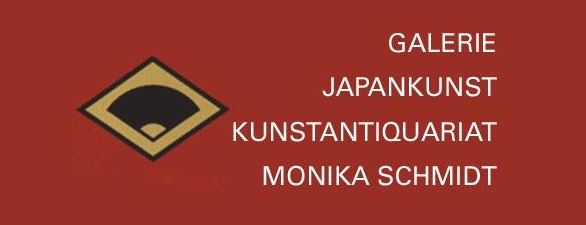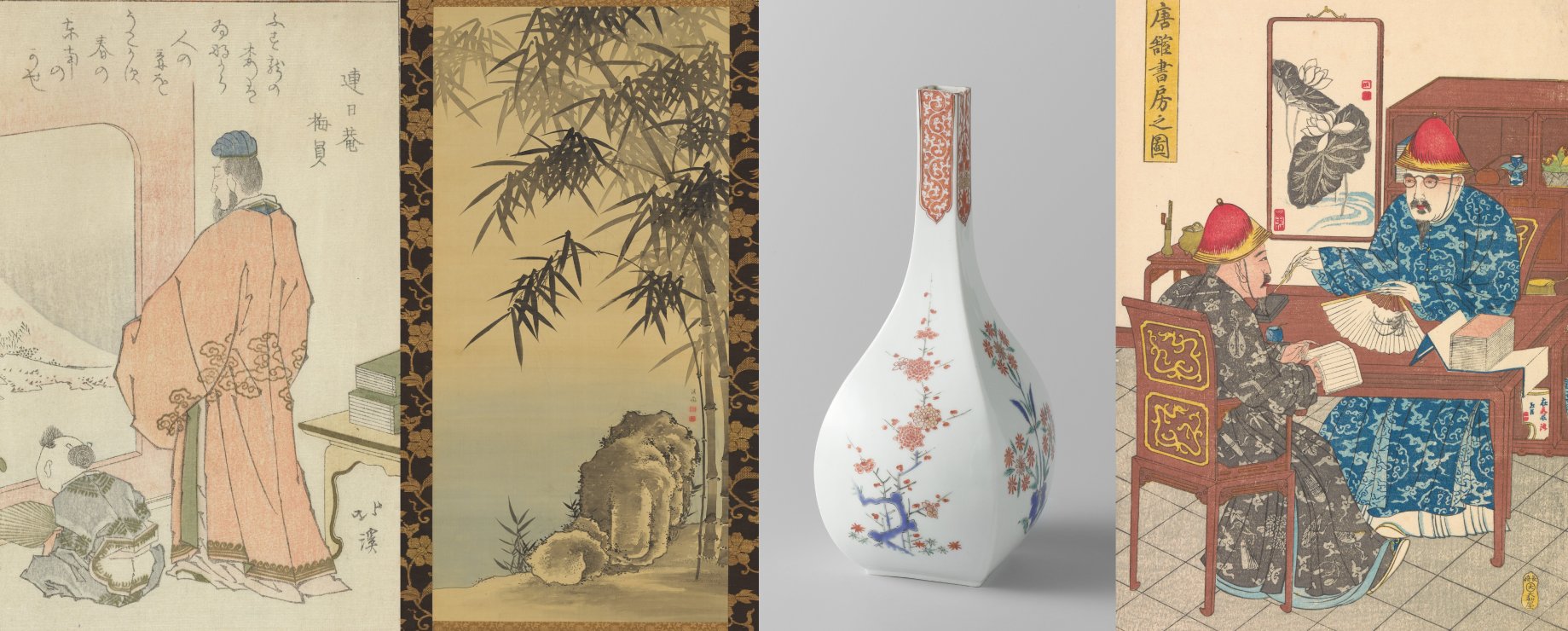
You are cordially invited to join the annual General Members Meeting on 25 June in Scheltema, Leiden. In addition to the GMM, the programme will include a mini-symposium in the theme ‘China through a Japanese Lens’.
The speakers:
- Larisa Alwin
- ‘The Sino-Japanese War in Woodblock Prints’ [in English]
- Paul Ruitenbeek
- ‘Ko-sometsuke - Chinees porselein voor de Japanse markt’ [in Dutch]
- Ching-Ling Wang
- ‘Stones from Other Hills: Artistic Intertwine of Print and Painting between China and Japan from 17th to 20th Century’ [in English]
Location and programme:
- Venue: Scheltema, (Marktsteeg 1, Leiden)
- 13:00 doors open
- 13:30 start GMM
- 14:30 coffee and tea
- 14:45 start lectures
- 16:00 drinks
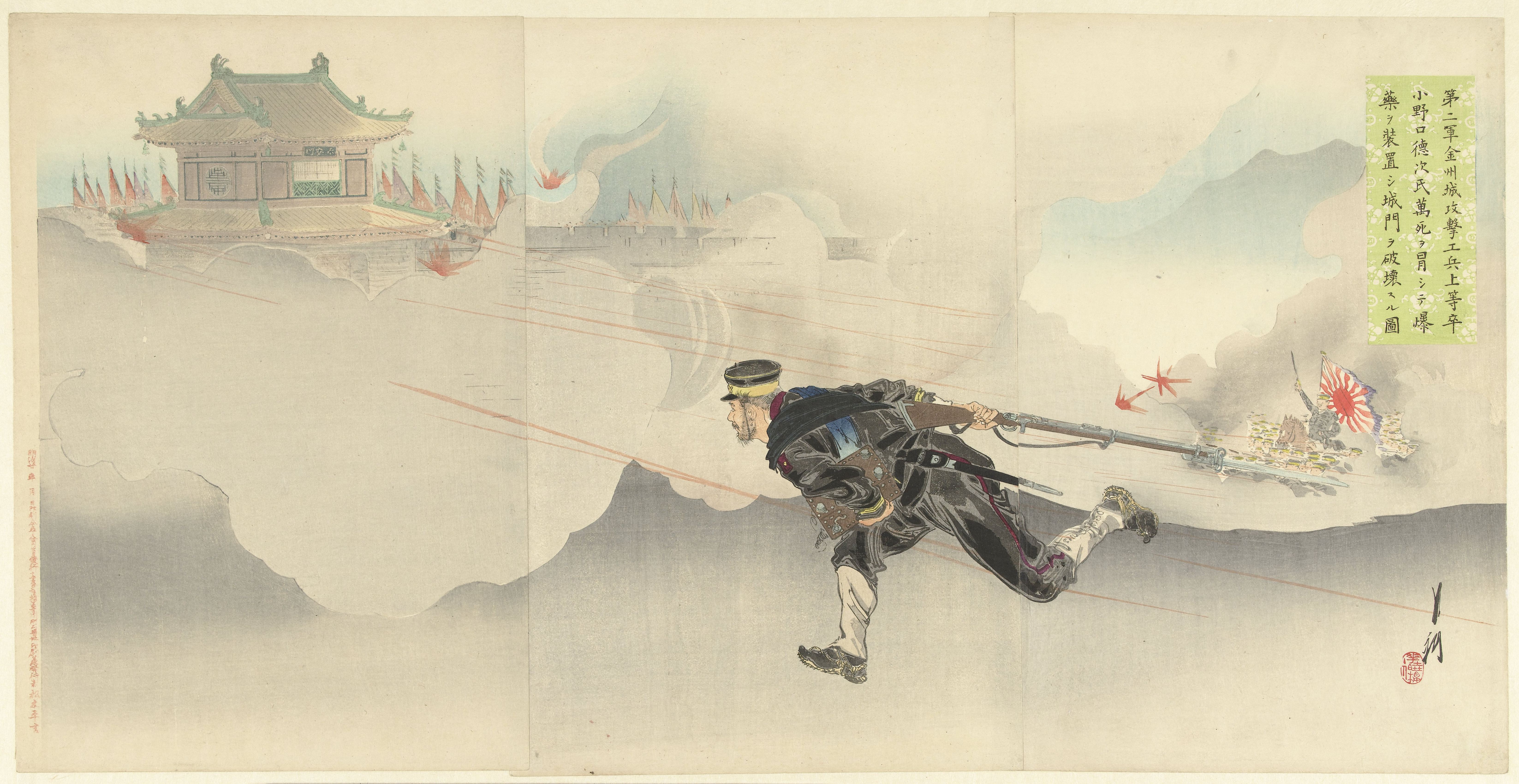
Onoguchi Defying Death to Blow Up the Gate of the Enemy’s Fortress, Ogata Gekkô, 1894, colour woodblock print, 370mm × 718mm (Rijksmuseum, Amsterdam)
Larisa Alwin - ‘The Sino-Japanese War in Woodblock Prints’ [in English]
The Sino-japanese war of 1894–1895 is depicted in a large corpus of woodblock prints and other visual imagery that reflect the newspaper reports of the war. Larisa Alwin will talk about the woodblock prints: how the commercial print publishers followed the news, what we see and what the prints might tell us.
Larisa Alwin is collector of Japanese art with a special interest in Meiji era war prints. She is currently also chairwoman of the SJA.
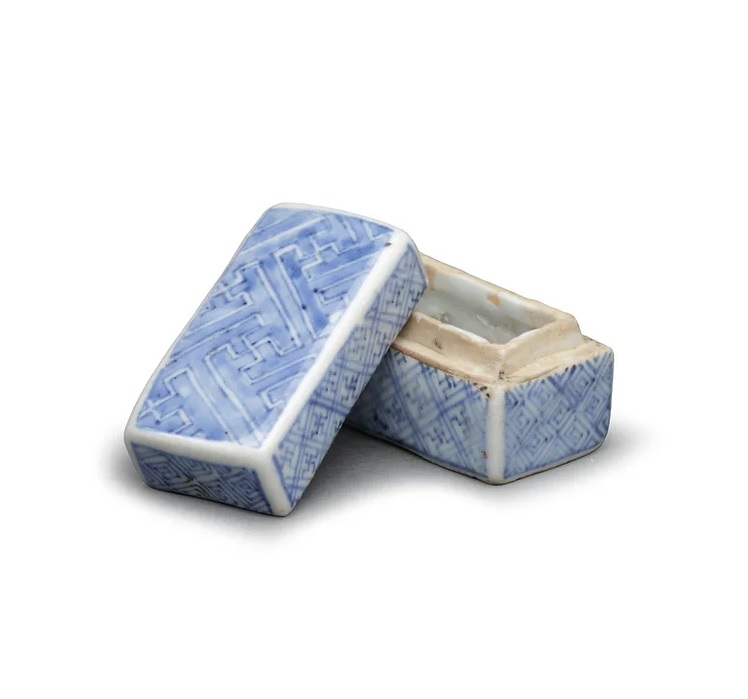
Ko-sometsuke box and cover, Ming dynasty, c. early 17th century, 5.6 cm long. (Paul Ruitenbeek Chinese Art)
Ko-sometsuke, translated ‘old blue and white ware’, is a term given by the Japanese for Chinese blue and white porcelain made for the Japanese market in the first half of the seventeenth century. The present small box and cover is probably an incense container used during the Japanese tea ceremony. Such boxes are regarded as small treasures in Japan and the present example is particularly rare and uncommon for its shape and design.
Paul Ruitenbeek - ‘Chinees porselein voor de Japanse markt’ [in Dutch]
Vanaf 1620 kregen de pottenbakkers in Jingdezhen de mogelijkheid om op grote schaal porselein te produceren voor export naar Japan. Al snel ontstonden er nieuwe vormen en decoraties die niet alleen de verschillen, maar ook de overeenkomsten tussen de Chinese en Japanse smaak benadrukken.
Paul Ruitenbeek is kunsthandelaar gespecialiseerd in oude Chinese kunst. De kunsthandel, Paul Ruitenbeek Chinese Art, bestaat nu vijf jaar. De galerie aan de Herengracht in Amsterdam is op afspraak te bezoeken.
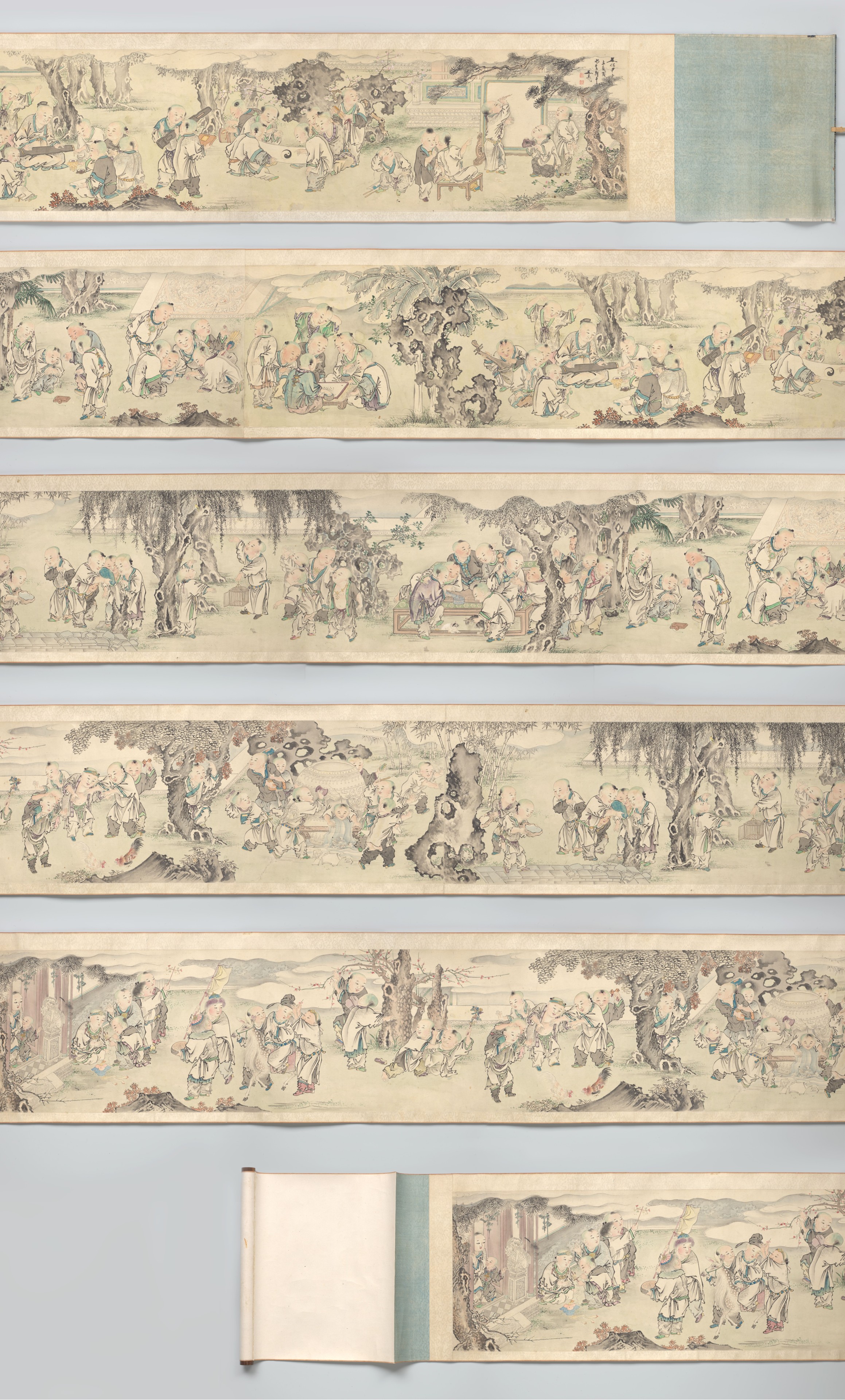
Tani Buncho, copy of One Hundred Children, 1804, handscroll painting, h 30.1cm × b 528cm. (Rijksmuseum, Amsterdam)
Ching-Ling Wang - ‘Stones from Other Hills: Artistic Intertwine of Print and Painting between China and Japan from 17th to 20th Century’
From the 17th century onwards, large quantity of Chinese prints has imported to Japan. They not only inspired the print making in Japan, but also had strong impact on Japanese painting. In the 19th to 20th centuries, Japanese prints and painting also influenced Chinese painting in a similar way. This talk deals with the relationship between prints and painting how they influence each other in China and Japan. It is divided into four parts: (1) the impact of Chinese prints on Japanese prints, (2) the impact of Chinese print on Japanese painting, (3) the impact of Japanese print on Chinese painting, and (4) the impact of Chinese painting on Japanese painting and the other way round. This talk showcases this “ping-pong” phenomena of the artistic intertwine of print and painting between China and Japan.
Ching-Ling Wang is curator of Chinese art at the Rijksmuseum, Amsterdam.
